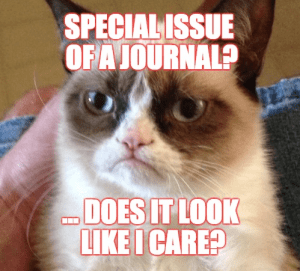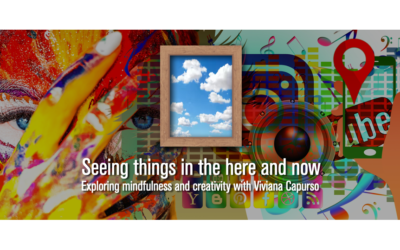
Danah Henriksen and I recently edited a special issue of the Journal of Technology and Teacher Education (Volume 23, Number 3, July 2015) devoted to Creativity, Technology and Teacher Education. This special issue is organized thematically around eight articles that explore these ideas from a rich range of perspectives. As we write in the introduction:
All in all the articles in this special issue speak to different aspects of theory, research, and practice – in attempts to go beyond the specifics or intricacies of tools, and towards providing a broader framework, or guiding ideas and takeaways that can inform the future of teacher education. One of the strengths of this special issue is the rich manner in which these key ideas are explored across different subject matters, classroom and learning contexts, technologies, teacher roles, pedagogical approaches, and theoretical frameworks… We believe that this special issue will be an important step toward exploring the connections between creativity, technology and teaching…
Below is a list of all the articles in the special issue, with links to the two articles we co-authored.
Articles in the special issue
Henriksen, D., & Mishra, P. (2015). Introduction to the Special Issue: Creativity, Technology & Teacher Education. Journal of Technology & Teacher Education, (23)3. pp. 273-277
Abstract: This special issue of the Journal of Technology & Teacher Education puts the spotlight on the topic of creativity – within the scope of technology and teacher education. The importance of creativity in teaching can be traced back to foundational thinkers such as Dewey (1916; 1934) and Vygotsky (1960). In more recent years creativity in education has begun to receive a significant level of attention (Florida, 2002; Pink, 2005; Robinson, 2003; 2011; Sawyer, 2011; Zhao, 2012). As it becomes clear that we must develop creatively thinking students that can problem solve and work across fields, creativity in teaching becomes essential (Cropley, 2003; Sternberg, 2006). Teacher educators, first and foremost, will be faced with helping future teachers develop the skills and knowledge required of them in 21st century classrooms.
Brennan, K. (2015). Beyond right or wrong: Challenges of including creative design activities in the classroom. Journal of Technology & Teacher Education, (23)3. pp. 279-299
Tillman, D. A., An, S. A, & Boren, R. L. (2015). Assessment of Creativity in Arts and STEM Integrated Pedagogy by Pre-service Elementary Teachers. Journal of Technology & Teacher Education, (23)3. pp. 301-327
Smith, S. (2015). Epic Fails: Reconceptualizing Failure as a Catalyst for Developing Creative Persistence within Teaching and Learning Experiences. Journal of Technology & Teacher Education, (23)3. pp. 329-355
Halverson, E. R., Lowenhaupt, R., & Kalaitzidis, Tj. (2015). Towards a Theory of Distributed Instruction in Creative Arts Education. Journal of Technology & Teacher Education, (23)3. pp. 357-385
Doering, A., & Henrickson, J. (2015). Fostering Creativity through Inquiry and Adventure in Informal Learning Environment Design. Journal of Technology & Teacher Education, (23)3. pp. 387-410
DeSchryver, M. D., & Yadav, A., (2015). Creative and Computational Thinking in the Context of New Literacies: Working with Teachers to Scaffold Complex Technology-Mediated Approaches to Teaching and Learning. Journal of Technology & Teacher Education, (23)3. pp. 411-431
Stansberry, S., Thompson, & P., Kymes, A., (2015). Teaching Creativity in a Master’s Level Educational Technology Course. Journal of Technology & Teacher Education, (23)3. pp. 433-453
Henriksen, D., Mishra, P., & Mehta, R. (2015). Novel, Effective, Whole: Toward a NEW Framework for Evaluations of Creative Products. Journal of Technology & Teacher Education, (23)3. pp. 455-478
Abstract: Creativity is increasingly viewed as an important 21st century skill that needs to be taught in schools. This emphasis on creativity is often reflected by having students engage in open-ended, project based activities and assignments. A key challenge faced by educators is how such assignments are to be evaluated. An in-depth review of existing tests of creativity indicates a relative lack of instruments or rubrics for evaluating creative artifacts. We address this gap by a two-step process. First, we provide a definition of creativity based on current research and scholarship as being something that is NEW, i.e. novel, effective, and whole. Next, we utilize this definition to develop a rubric that seeks to evaluate creative artifacts along these three dimensions. We also provide examples of how this rubric has been used to evaluate student created artifacts in a master’s level seminar devoted to creativity in teaching and learning. We provide not just the rubric but also examples of projects that score low to high along these three dimensions. We argue that this line of work, though in its initial stages, has much to offer educators as they seek to evaluate student generated creative artifacts. We end with suggestions for future research in this area as well as its implications for teacher education and teacher professional development.
Finally, a note of thanks. A special issue of this scope would not be possible without the help and assistance of a range of individuals. First and foremost we would like to thank Peter Albion, editor of JTATE for his unstinting support for this special issue. From the moment we broached the idea to him (over 2 years ago) to this day, Peter has been a rock: thoughtful, helpful and available. This could not have happened without him.
We would be remiss if we did not thank the authors who are represented in this special issue. Their original work, and flexibility in going through multiple rounds of revisions (and revisions of revisions), and their willingness to peer-review other chapters, made this process both feasible and fun.
Finally, to all the graduate student members of the Deep-Play research group at Michigan State (http://www.deep-play.com), for all the time and effort they invested in discussing, arguing, reviewing, and proofreading as these articles came together. They were often “volunteered” into these tasks by us—but they did it all in good cheer and with the approach of thoughtful reviewers, careful proofreaders, and APA style-watchers. In alphabetical order, they are: William Cain, Chris Fahnoe, Jon Good, Sarah Keenan, Rohit Mehta, Carmen Richardson, and Colin Terry.




0 Comments